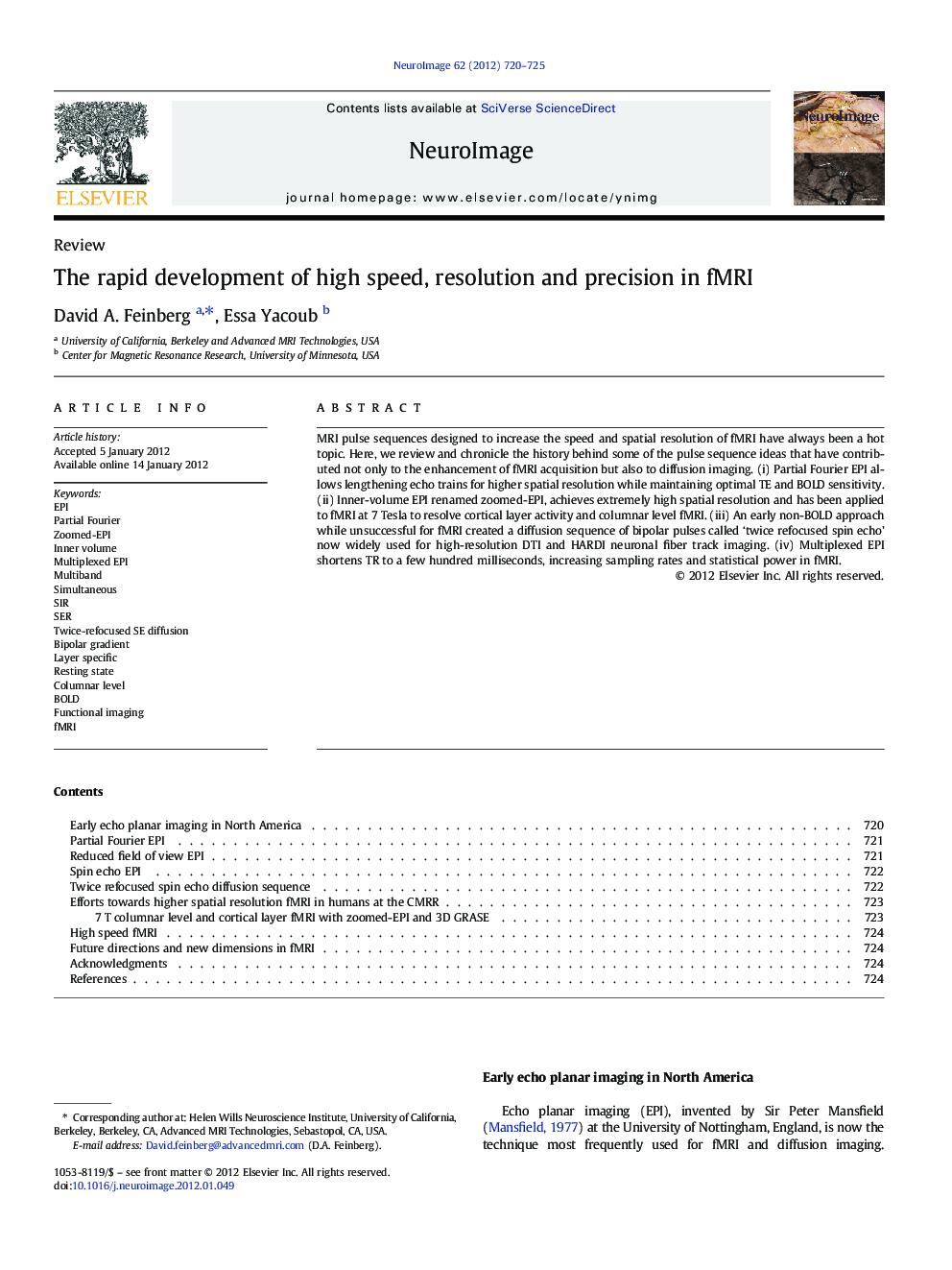| Article ID | Journal | Published Year | Pages | File Type |
|---|---|---|---|---|
| 6031593 | NeuroImage | 2012 | 6 Pages |
MRI pulse sequences designed to increase the speed and spatial resolution of fMRI have always been a hot topic. Here, we review and chronicle the history behind some of the pulse sequence ideas that have contributed not only to the enhancement of fMRI acquisition but also to diffusion imaging. (i) Partial Fourier EPI allows lengthening echo trains for higher spatial resolution while maintaining optimal TE and BOLD sensitivity. (ii) Inner-volume EPI renamed zoomed-EPI, achieves extremely high spatial resolution and has been applied to fMRI at 7Â Tesla to resolve cortical layer activity and columnar level fMRI. (iii) An early non-BOLD approach while unsuccessful for fMRI created a diffusion sequence of bipolar pulses called 'twice refocused spin echo' now widely used for high-resolution DTI and HARDI neuronal fiber track imaging. (iv) Multiplexed EPI shortens TR to a few hundred milliseconds, increasing sampling rates and statistical power in fMRI.
